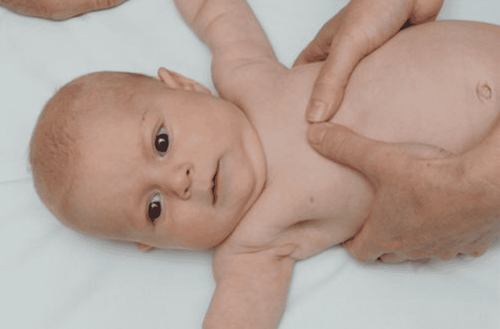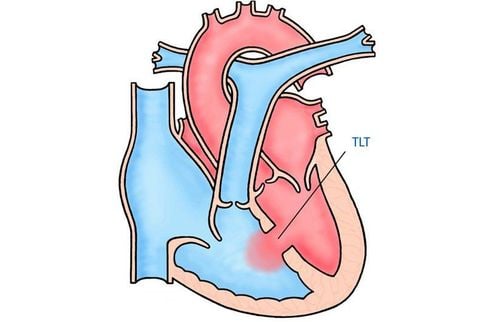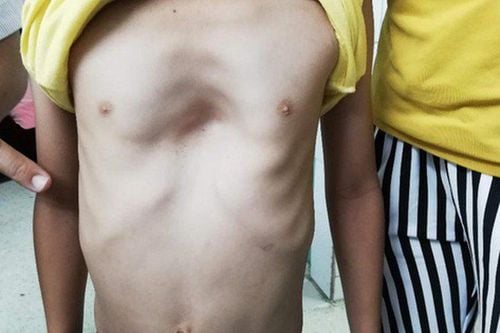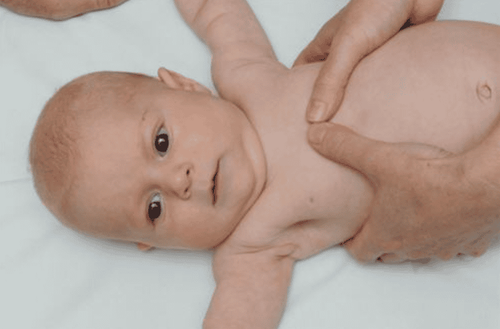This is an automatically translated article.
The article was professionally consulted by Specialist Doctor II Mai Anh Kha - Orthopedic Surgeon - General Surgery Department - Vinmec Danang International General HospitalConvex sternum deformity, concave or concave sternum deformity is a congenital pathology that appears from childhood with the manifestation of the central ribcage being completely convex or deeply concave. If not treated promptly, congenital breastbone deformity not only causes cosmetic deformation but also has many consequences for health and development.
1. What is a convex sternum deformity?
Convex breastbone deformity, also known as chicken breast, chest convex, sometimes called pigeon chest or congenital protrusion, is a deformity of the rib cage. Characteristic of a convex sternum deformity is that the sternum and ribs protrude anteriorly.
Convex sternum malformation is the opposite of congenital thoracic concave malformation. The specific shape of the skeleton deforms to different degrees in each specific case, the ribs protrude forward, completely or slightly convex.
Thoracic malformations are common with the rate of 1 in 400 babies born, of which chicken breast accounts for about 20% of thoracic malformations.

Dị dạng trên thường gặp ở với tỉ lệ 1/400 trẻ sinh ra
2. What is a concave sternum deformity?
Congenital concave sternum malformation is an abnormal deformity of the ribcage due to the abnormal development of some ribs and sternum, causing the rib cage to become concave. Concave sternum malformation can be detected immediately after birth or at puberty, most are detected right after birth.The natural course of concave sternum malformation is never able to resolve on its own, may remain the same degree as immediately after birth, but however, the majority gradually worsen from birth to puberty and especially develop rapidly until puberty.
The simplest classification of sternal concave deformities is divided into 2 types: concentric and eccentric.
According to Nuss, the classification of concave sternum deformities is based on the shape of the concave area, the length of the concave sternum, and the torsion of the sternum.
According to author Hyung Joo Park classification:
Type IA: focal concentric chest concave. Type IB: flat concentric chest concave. Type IIA1: focal eccentric chest concave. Type IIA2: flat eccentric chest concave. Type IIA3: eccentric chest concave creating a long channel. Type IIB: mixed thoracic concave, both convex and concave.
3. Sternum deformity surgery
Surgery of sternum deformity is the only method to treat concave sternum deformity and convex sternum malformation. There are many methods applied such as excision of the anterior chest wall, using an external traction frame, cutting the deformed costal cartilage across the sternum without or using instruments with the function of raising the sternum. However, these methods have common characteristics of complexity, long operation time, high blood loss, high rate of complications and recurrence.
Currently, surgical treatment of sternum malformation has the same methods and basically 3 types of surgery:
Balanced concave sternum malformation just need to bend the balance bar. Deformity of concave sternum: bending requires more difficulty, bringing in and adjusting to balance both sides, lifting evenly. If you lift without weight, it will make your breasts ugly. For children with concave deviated, early treatment will be better because soft bones when lifting will be easy. In addition, the problem of curvature of the spine is minimized. Concave sternum deformity when surgery is indicated: You need surgery to treat congenital chest concave when the thoracic index is above 3.25 (ie the Haller index evaluates the anterior-posterior dimension of the thorax). This is based on layered CT scans for accurate assessment.

Bạn cần được phẫu thuật điều trị lõm ngực bẩm sinh khi chỉ số lồng ngực trên 3,25
Most doctors appoint surgery for breastbone deformity between the ages of 6 and under 18 years old, under 18 years of age is most effective because during puberty when the chest wall is still developing to easily lift.
In addition, the endoscopic sternal deformity surgery method is also quite popular with the placement of a breast lift bar to lift, easy to perform, high aesthetics, faster recovery and no pain. The incision is large and the bone is not cut. After surgery, about 4-5 days, you can leave the hospital, as long as 1 week. The breast lift bar in this case is usually left for 2-3 years, depending on the age:
For children under 5 years old, the bar is usually left for about 2.5 - 3 years. Older children with rapid ossification usually keep the breast lift bar for 2 years. To register for examination and treatment at Vinmec International General Hospital, you can contact the nationwide Vinmec Health System Hotline, or register online HERE.
MORE:
Surgery to treat congenital thoracic cavity Congenital thoracic cavity in children: Diagnosis and treatment of congenital thoracic cavity in children: Symptoms and complications














